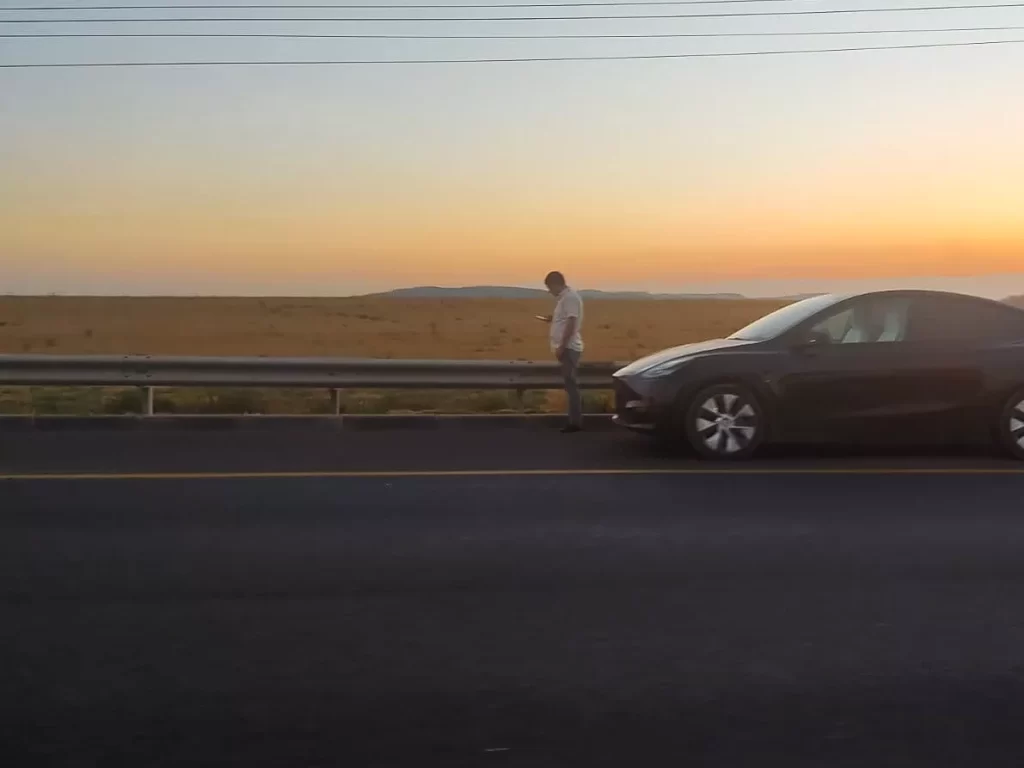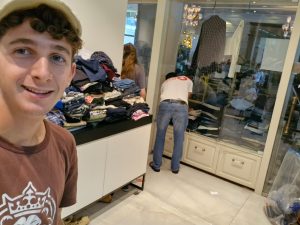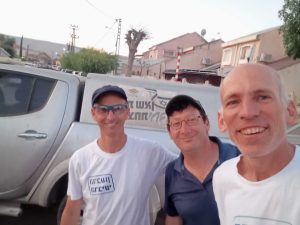*This story is written with male characters but could equally apply to a female.
Driving around the country is something I do a lot. Often, I am in the driver’s seat, but I do not mind at all being in the passenger’s seat. See, not driving gives me the opportunity to do many things I can’t do while driving. Like reading a book or following the news or Facebook feed on my cell phone. I also have more control over the radio and can control the station I like. With kids in the back, being in the passenger seat allows me to focus more on talking to them, or playing car games, and yep, we like to play car games. The kind like, “I spy with my little eye…,” or “who can add up the numbers of the license plate of the vehicle in front of us the fastest?” But most of all I like to look out the window, take in the scenery, and follow the road signs. Everyone in the car knows this about me, because I like to quiz them on the different things I see on the way. Which direction are we looking when we look out the right side of the car, and what mountains do we see? What biblical battle took place in this geographical region? Who is the upcoming Jewish settlement named after? Have you noticed the new store we just passed on our left, how long has it been there, do you know anything about it? These are just a few. It’s funny, on roads we travel often, the kids remind me to ask the questions I always ask when we pass specific sites, or they reprimand me for forgetting. I am not sure if this is due to their liking of my repetitive quizzing, or just regular old parent-mocking of our never-ending traditions.
Most of all, I enjoy looking at the human landscape of our country. All sorts of people, people that are just on their way here or there. Like couples holding hands as they stroll down the street with a cup of coffee in hand. A few blocks away, I can imagine them exchanging a kiss and saying bye to each other before they set off on their separate ways. I try not to follow them too closely, because many other things can happen on the way. Someone can get hit by a car, or bump into a friend they had a crush on back in high school that can lead to a new relationship.
Oftentimes, scanning the streets for people can become very awkward. Like the time you turn your head while at a red light, and the car next to you is so close to you that you feel like you are inside it, and suddenly you find yourself staring right into the eyes of a beautiful woman. I enjoy watching children playing in parks. Observing workers along the road or in construction sites. Groups of young teenagers at a remote intersection, some standing and some sitting on the curb with backpacks resting beside them, watching with longing eyes as their friend flags down a driver to pick them up, hoping they can hitch a ride and get closer to their destination. Based on what they are carrying and the type of group they are, you can tell if they are going hiking, or if they are going to a beach, for example, on the Kinneret (Sea of Galilee) for a couple days of fun.
One thing you can’t miss while driving up and down the country are the cars stopped on the side of the road without any indication. Neither is it an accident nor a police car giving a ticket, both of which appear on the screen of Waze in advance, that is if you turned it on before you started driving- and nowadays only fools don’t. It is just a regular car. It could be any type, there is always a guy standing outside of it. Occasionally you see him right away standing next to his car, or you might find him in bushes next to the road or behind the remote concrete bus stop. Yep, these are the pee-ers. The many people who just can’t hold out and just have to stop in the middle of the road to relieve themselves. You will never miss them. This is one of those things that just doesn’t seem to be going away.
I don’t know if this has anything to do with the fact that we spend more time than ever in our cars commuting to work, running errands, or taking long road trips. It may have something to do with the fact that every time we get into our car we stuff it full of snacks and drinks from the pantry or the nearest grocery or gas station. Perhaps it has to do with the perception that everything in our country is so close and that we will reach our destination in no time. I don’t even know If this phenomenon is local and unique to our country or is worldwide. What I do know is that it is very common here and I can expect to have at least one encounter every time I get on a main road or highway.
Once I was driving home with a friend from the beach. The drive takes about an hour and a half and is made up of a couple major highways and freeways. Not far into the drive we spotted a pee-er. It caught both of our attention and we could not just ignore it. It wasn’t that he was standing in front of his car on the other side of the road fully exposed to oncoming traffic, because this was not the first time we had seen this mistake. As people watchers, we are always intrigued by what we see. Whether we were taken in by what we saw or not, the incident caused a full-on discussion about this common practice. Our resolution was to count how many such encounters we would have on the entire drive home. It was like counting speed bombs from the entrance of our community to our house, not a long distance, but we all know it is overloaded with them. Thirteen in all. It was an exhausting exercise, a scientific quantitative field research, which resulted in an undisputed fact – We Pee Israel. Peeing Israel might be the one thing that unites our multicultural society.
But this is not the reason I am telling you about my love and passion for looking out the window during car rides in search of the human landscape. For in Israel there is a much more unique common practice. Once again, we can spot it amongst other places on the shoulders of the highways, mostly in the form of a man standing alongside his car. A closer look at these people will reveal an entirely different phenomenon. Let’s call it the “I got to pray” phenomena.
See Israel is made up of a majority of Jewish citizens with a large Arab minority who mostly are Muslim. Both the Jewish and Muslim religious traditions require prayer, three or five times a day respectively. In both traditions’ prayer time is dependent on sunrise and sunset, leaving windows of time for each prayer. One must make sure to complete his prayer within the appropriate time slot, for if it passes they will not be able to make it up. In particular the afternoon prayers are the tricky ones, the window opens up sometime during midafternoon when everyone is at work and closes at sundown. And yep, throughout the year many times it narrows down to the drive home from work.
As an observant Jew, I know what is going through the head of the driver. As he is cruising home on the freeway, on the phone with a coworker tying up loose ends of the day, he releases the sunset. ‘Oh my gosh, I forgot the afternoon Mincha prayer, if I don’t stop now I will miss it.’ He immediately takes his foot off the gas, slows down the car and brings it to a halt on the shoulder of the road. He opens the door and gets out, straightens out his clothing, which could be accompanied with putting on his suit jacket and a black hat, stands firm facing Jerusalem to the best of his orientation abilities, and recites his prayer. When he is done, he will get back in his car and continue on to his destination.
For Muslims these windows of prayer are more frequent, as we have already mentioned they are obligated to five prayers each day. Just as the Jews, you can spot them praying in almost every social setting, including on the soldiers of highways. It is a bit different, but overall the same. Cruising home from work to a beautiful sunset, realizing the window of prayer is closing in. Stopping the car and getting out. Pulling out of the trunk a prayer mat, that every practicing religious Muslim would always have, and setting up a place for prayer alongside the car facing the direction of the Kaaba in Mecca, again to the best of his orientation abilities. Then comes the removal of the shoes, washing and cleansing their limbs with water from a bottle. The Muslim prayer is made up of many more physical gestures then the Jews prayer, including bows and prostrations, known as rakat, allowing skilled passing by people observers like myself to tell the difference. It is all very natural, and once he is done, he will put on his shoes, fold up his mat, and be on his way home.
It is not only the Jewish and Muslim religious practicing individuals that stop on the side of the road to pray. Many times, I spot all sorts of individuals along main roads and highways, each out there for a reason. Beautiful summer red and purple sunsets stop the masses as they get out with their cellphones to capture the moment straight forward or in a selfie. Winter pink and white snowy blossoms of the almond tree get people to abandon their cars along the road and run into the field in a happy and joyful dance, as do the bright yellow fields of sunflowers in the beginning of the summer, or the overflowing grapes in the vineyard right before they are harvested for wine. Time and again I see people stopping their cars at intersections full of young soldiers waiting to get picked up on their way back to base, to offer gratitude, encouragement and some snacks and cold drinks they just happen to have with them.
Many people stop on the side of the road. They might not have bladder issues nor a God to pray to, yet they have a common practice of taking a break from the rush of life in the form of a religious experience on the side of the road.
Warning: stopping your car on the shoulder of the road is dangerous. The fact that I am describing a common practice doesn’t at all mean that I reccomend or approve of it or encourage it in any form or place.




